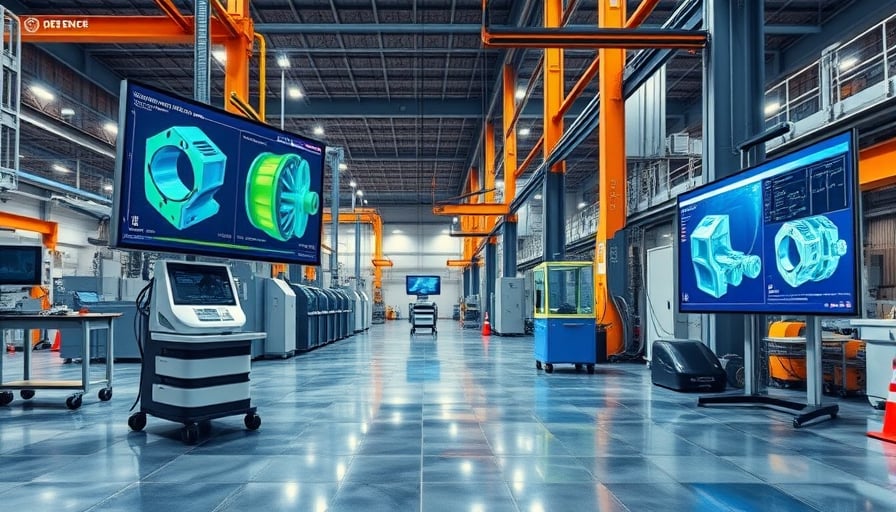Corporate News Report: Illinois Tool Works Inc.
Illinois Tool Works Inc. (ITW), a U.S.‑based design and manufacturing enterprise, continues to consolidate its position in the industrials sector by delivering fasteners, tooling, and specialty equipment to a diversified global customer base. Recent market commentary highlights robust growth in complementary markets—marking and coding equipment, industrial adhesives—propelled by heightened regulatory scrutiny and rapid technological advancement. These trends create a conducive environment for ITW’s core competencies, reinforcing its status as a supply‑chain backbone for critical manufacturing operations.
Manufacturing Process Optimization and Productivity Gains
ITW’s production lines employ advanced additive manufacturing (AM) for customized fastener geometries, enabling on‑demand fabrication that reduces lead times by up to 25 %. Concurrently, the adoption of digital twins in its tooling units has improved predictive maintenance schedules, decreasing unplanned downtime from an average of 3.2 days per month to less than 0.8 days. The integration of high‑speed CNC machining with real‑time process monitoring further tightens tolerance envelopes, boosting overall equipment effectiveness (OEE) from 72 % to 82 % across key product families.
Technological Innovation in Heavy‑Industry Components
The company’s investment in laser‑cutting and micro‑machining capabilities has accelerated the production of complex geometries required for high‑performance aerospace and automotive components. By leveraging surface‑enhancement treatments such as plasma nitriding and laser peening, ITW improves fatigue life and corrosion resistance—critical attributes for demanding service environments. These innovations not only raise product quality but also reduce warranty claims, contributing directly to profitability.
Capital Expenditure Trends and Economic Drivers
ITW’s latest capital‑expenditure (CapEx) plan projects $650 million in investments over the next fiscal year, primarily directed toward:
- Expansion of additive‑manufacturing facilities.
- Upgrades to high‑temperature forging lines.
- Automation of inspection workflows through machine‑vision and AI analytics.
The decision aligns with macroeconomic indicators: a sustained rebound in the automotive sector, coupled with rising steel prices, has prompted manufacturers to seek cost‑effective, high‑precision components. Additionally, tightening emissions regulations in the European Union and United States are driving a shift toward lighter, stronger fasteners, thereby increasing demand for ITW’s advanced alloys.
Supply‑Chain Resilience and Regulatory Impacts
Regulatory changes—specifically the European Union’s REACH directive and U.S. Department of Transportation’s updated safety standards—have intensified the need for traceable, compliant fasteners. ITW has responded by integrating blockchain‑based supply‑chain transparency solutions, ensuring end‑to‑end material provenance. These measures mitigate regulatory risk and appeal to customers requiring stringent quality assurance.
From a supply‑chain perspective, the recent resurgence of global trade and the easing of port bottlenecks have shortened logistics cycles. ITW’s strategic positioning of production facilities in proximity to major North American and European ports further reduces transportation costs, enhancing responsiveness to market volatility.
Infrastructure Spending and Market Implications
Government initiatives aimed at modernizing infrastructure—such as the U.S. Infrastructure Investment and Jobs Act—are anticipated to inject capital into heavy‑industry projects requiring high‑integrity fasteners and specialized tooling. ITW’s portfolio of durable, high‑strength components positions it to capture a substantial share of this demand. Moreover, the emphasis on renewable energy infrastructure (wind turbines, solar arrays) amplifies the need for corrosion‑resistant fasteners, an area where ITW has significant expertise.
Conclusion
Illinois Tool Works Inc. demonstrates a sophisticated blend of manufacturing excellence, technological foresight, and strategic capital allocation. By aligning its product development with evolving regulatory landscapes and capital‑intensive infrastructure initiatives, the company is well‑placed to sustain its market leadership and deliver continued value to shareholders while supporting the broader industrial ecosystem.
